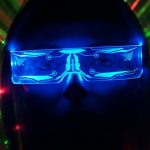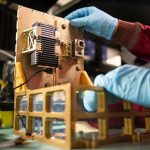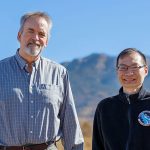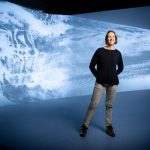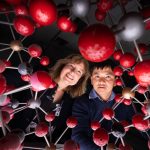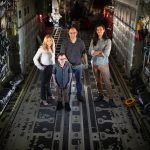Arctic fiber: Using fiber optics to study seafloor permafrost
Scientists are combining sound, light and temperature measurements to map miles of Arctic seafloor.
Researchers develop tantalizing method to study cyberdeterrence
Sandia developers build a multiplayer online war game to learn how people’s decisions during threatening situations can impact national security.
Labs researchers capture six R&D 100 Awards
Honorees include a seizure-predicting device, software that optimizes network microgrids, tech that streamlines additive manufacturing and others.
Testing new technology and research on orbit
Labs researchers and engineers are creating a process that uses the International Space Station as a proving ground to rapidly test and mature technology in space.
Detecting threats beyond the limits of human, sensor sight
A team of computer scientists has developed a software system that can find and track moving objects as small as a pixel. The technology can be used to analyze video and images from satellites, drones and far-range security cameras.
Remembering Al Narath
Albert Narath, a chemist and head of Sandia from 1989 to 1995, died May 2, leaving a legacy of commitment to research at the Labs.
Sandia names Truman Fellows
These fellows pursue high-risk, high-reward ideas in their research. Read about what they plan to accomplish at the Labs.
Studying ship tracks
To develop tools that could inform methods for slowing climate change and its impacts, scientists are studying clouds formed by moving ships.
Can clay capture carbon dioxide?
A team of engineers and scientists are exploring new ways to capture carbon dioxide from the air we breathe.
Hackers could try to take over a military aircraft; can a cyber shuffle stop them?
Sandia and Purdue University team up to test cyberdefense against an algorithm trained to break it.


